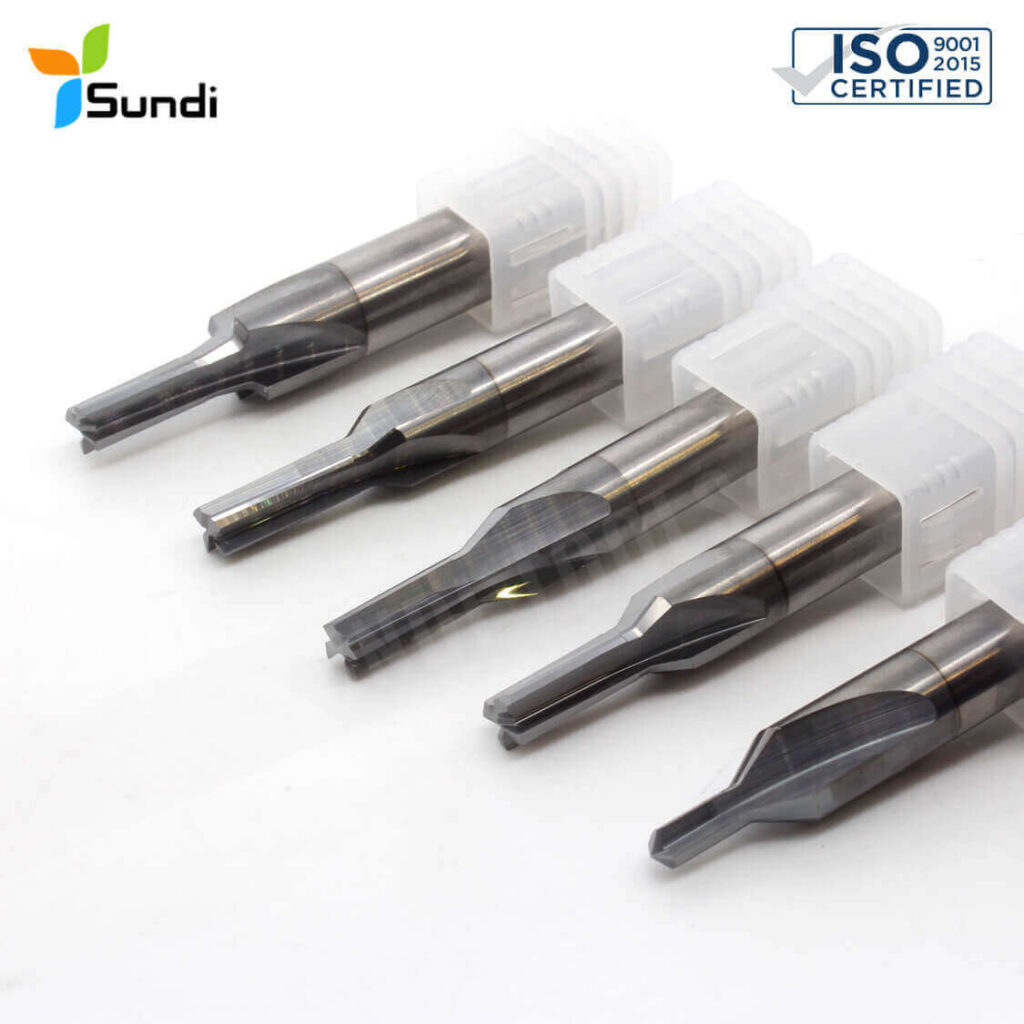Any Difference Between Ceramic Inserts and CBN Inserts for Hardened Steel
Everything You Need to Know About Carbide Reamers
Carbide reamers are versatile tools used in various industries. They offer precision and durability, making them indispensable in machining processes. In this article, we will delve deep into the world of carbide reamers, exploring their applications, benefits, and more. Whether you’re a seasoned professional or just getting started, this guide will provide valuable insights into these essential tools.
What is a Carbide Reamer?
A carbide reamer is a cutting tool used in machining and metalworking to enlarge, shape, or finish holes in various materials, especially metals. It is designed for precision and accuracy in hole-making processes. The term “carbide” refers to the material used in making the cutting edges of the reamer, which is typically tungsten carbide, a very hard and durable material.
Carbide reamers are known for their exceptional hardness and resistance to wear, making them suitable for cutting through tough materials like steel, stainless steel, cast iron, and other alloys. They are commonly used in industries such as automotive manufacturing, aerospace, and general metalworking.

The key features and benefits of carbide reamers include:
- Hardness: Carbide cutting edges are much harder than high-speed steel, providing longer tool life and extended periods of use without the need for frequent re-sharpening.
- Precision: Carbide reamers are manufactured with precision to achieve tight tolerances and consistent hole dimensions, ensuring the desired fit for bolts, pins, or other components.
- Resistance to Heat: Tungsten carbide can withstand high temperatures, reducing the risk of tool deformation or failure due to heat generated during machining.
- Versatility: Carbide reamers can be used on a wide range of materials, from soft metals to hard alloys, plastics, and composites.
- Chip Evacuation: Many carbide reamers have flutes (helical grooves) that help in efficient chip evacuation, preventing chip buildup and ensuring a smoother cutting process.
- Coatings: Some carbide reamers are coated with materials like titanium nitride (TiN) to further enhance their performance, reduce friction, and increase tool life.
Carbide reamers come in various types and sizes, including straight-fluted, spiral-fluted, and chucking reamers, each designed for specific applications. They are commonly used in drill presses, milling machines, and lathes to improve the accuracy and finish of holes in machined components. Proper selection, maintenance, and usage of carbide reamers are crucial for achieving precise and consistent hole sizes in manufacturing and metalworking operations
What is the parts of a Carbide Reamer
- Shank: The shank is the portion of the reamer that is held in the tool holder or collet of the machining equipment. It typically has a cylindrical shape and is designed to fit securely in the machine’s spindle.
- Body: The body of the reamer is the main part of the tool, and it consists of several sections:
– Flutes: These are the helical or spiral grooves that run along the length of the reamer’s body. Flutes help in chip evacuation, allowing the removed material to flow out of the hole as it is being reamed. Carbide reamers may have multiple flutes, commonly 4 or 6, which helps distribute cutting forces evenly.
– Cutting Edge: The cutting edge is the sharp edge of the reamer that does the actual cutting. Carbide reamers have precision-ground cutting edges that are very hard and capable of cutting through tough materials.
– Margin: The margin is the land area between adjacent cutting edges. It provides stability to the reamer and helps maintain the hole’s size and accuracy during the machining process.
- Helix Angle: The helix angle is the angle between the flutes and the reamer’s axis. It plays a crucial role in chip evacuation and the efficiency of the reaming operation. A proper helix angle ensures smooth chip removal and reduces the risk of clogging or tool wear.
- Point Geometry: The point of the reamer can have various geometries, depending on the specific application. Common point geometries include:
– Chamfered Point: This type of point has a flat, chamfered tip and is suitable for general-purpose reaming.
– Tapered Point: Tapered points are designed for reaming holes with a conical shape.
- Coating: Many carbide reamers are coated with a thin layer of titanium nitride (TiN) or other coatings to enhance their performance and tool life. These coatings reduce friction, increase wear resistance, and improve chip evacuation.
- Overall Length: The overall length of the reamer includes the shank and the body. The length can vary depending on the specific application and the depth of the hole to be reamed.
What is a carbide reamer used for?
- Hole Sizing and Finishing: Carbide reamers are often employed to achieve precise hole dimensions in machined components. They can be used to bring holes to their final desired size, ensuring tight tolerances and accurate fits for fasteners, dowel pins, or other components.
- Surface Finish: Carbide reamers can improve the surface finish of the inner walls of a hole. This is particularly important in applications where a smooth, polished surface is required for proper functioning or aesthetics.
- Deburring: When holes are drilled or machined, burrs and rough edges may be left behind. Carbide reamers can remove these imperfections, creating clean and burr-free holes.
- Alignment: In precision machining, it’s crucial to ensure that holes are perfectly aligned with each other or with other features of the workpiece. Carbide reamers can help achieve this alignment by refining hole positions and angles.
- Tapered Holes: Some carbide reamers are designed for creating tapered holes, which are common in applications like countersinking or creating conical holes for bolts or fasteners.
- Hard Materials: Carbide reamers are ideal for machining hard materials like hardened steel, stainless steel, and alloys, where conventional high-speed steel tools may wear out quickly.
- High Precision: They are frequently used in industries requiring high precision, such as aerospace, automotive, and medical device manufacturing, where tight tolerances and accuracy are critical.
- Batch Production: Carbide reamers are commonly used in manufacturing processes that involve producing multiple parts with consistent hole dimensions. They help maintain uniformity and reduce rejects.
Applications of Carbide Reamers
Carbide reamers find extensive use in various industries due to their precision and reliability.
- Metalworking
In metalworking, carbide reamers are indispensable for creating precise holes in metal components. Whether it’s for automotive parts or aerospace components, carbide reamers ensure the highest level of accuracy.
- Woodworking
Craftsmen and carpenters rely on carbide reamers to create clean and perfectly sized holes in wood. This is essential for joinery and cabinetry work.
- Aerospace Industry
In the aerospace industry, where precision is non-negotiable, carbide reamers are used for drilling holes in aircraft components. Their durability and precision are crucial for safety.
- Automotive Sector
Carbide reamers play a pivotal role in the automotive sector, where they are used for machining engine parts and other critical components.
FAQs - Frequently Asked Questions
Q: How do I choose the right carbide reamer for my project?
A: Consider factors like the material you’re working with, the desired hole size, and the machine’s capabilities. Consult with experts for guidance.
Q: Are carbide reamers suitable for DIY projects?
A: Absolutely. Carbide reamers are available in various sizes and are suitable for both professional and DIY use.
Q: Do carbide reamers require special maintenance?
A: Regular cleaning and proper storage are essential to maintain their cutting edge. Follow the manufacturer’s guidelines for maintenance.
Q: Can carbide reamers be resharpened?
A: Yes, carbide reamers can be resharpened, but it’s a specialized process best done by professionals.
Q: Are carbide reamers cost-effective in the long run?
A: While they may have a higher initial cost, their durability and precision make them cost-effective over time.
Q: Where can I purchase high-quality carbide reamers?
A: You can find reputable suppliers and manufacturers online or at industrial supply stores. Look for reviews and recommendations.
Carbide reamers are essential tools that have revolutionized precision hole-making in various industries. Their exceptional durability and accuracy make them a top choice for professionals and DIY enthusiasts alike. Whether you’re in metalworking, woodworking, or aerospace, carbide reamers will help you achieve the precision you need. Explore the wide range of options available, choose the right one for your project, and experience the excellence of carbide reamers for yourself.


